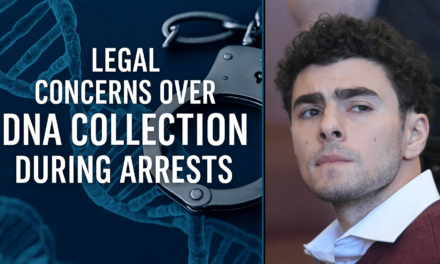The investigation into the brutal murder of four University of Idaho students in November 2022 became a national sensation. Accused, criminology doctoral student Bryan Kohberger has endured intense media scrutiny and overwhelming social media speculation. While public interest can aid investigators, in this case the deluge of “internet sleuths” and sensational reporting have interfered—risking jeopardizing Kohberger’s constitutional right to a fair trial.
Media’s Influence: Not Always Innocent Coverage
National media outlets quickly latched onto the case. Highly publicized details—including Kohberger’s alleged DNA on a Ka-Bar knife sheath and search history involving serial killer Ted Bundy—shaped the shaping of public opinion even before trial. His defense moved to change venue and issued gag orders, citing concerns that the broad coverage and portrayal of guilt were threatening Kohberger’s fair trial rights.
According to defense filings, the flood of reporting—amplified by Dateline and a forthcoming James Patterson book—risks tainting the jury pool. These materials “contain non-public information … carefully curated to promote a narrative of guilt,” the defense argued. Legal experts predict this could lead to further delays and challenges to certain evidence.
Social Media Sleuths: Helpful or Harmful?
On platforms like TikTok and Reddit, true crime influencers and amateur “web sleuths” ran rampant with speculations, theories, and accusations:
-
Hashtags like #IdahoMurders amassed over a billion views. Thousands of users scrutinized every detail—some innocent people were falsely implicated.
-
One TikToker, “Ashley Solves Mysteries,” claimed a University of Idaho professor was involved, prompting cease-and-desist letters and emotional distress.
-
The Moscow Police Department had to monitor and address a wave of misinformation, cautioning that “harassing or threatening” those unjustly named could lead to criminal charges.
These sleuths pulled personal information, circulated unverified tips, and even drove individuals into hiding. The fallout demonstrated how unvetted social media narratives can compound the trauma of victims and families—and potentially taint investigations and juror impartiality.
Legal Risks: Prejudice, Impartiality & Jury Fairness
University of Idaho law professor Jordan Gross warned that overwhelming prejudicial media coverage creates a jury pool “infested” with preconceived notions. Judges responded by limiting cameras, issuing gag orders, and shifting the trial venue—moves aimed at insulating proceedings from toxic outside influences.
Defense attorney Anne Taylor is leveraging media intensity in motions to postpone trial. The stated goal: give time for “heat to subside,” challenge evidence, and prevent irreversible jury bias (fox13seattle.com). But every delay packs a cost: justice delayed risks justice denied and burdens those awaiting closure.
Collateral Damage: Lives Torn Apart
False accusations from social media sleuths didn’t just affect the accused—they spread far wider. Innocent professors, students, and community members were thrust into online chaos:
-
A local professor was falsely labeled a suspect, facing threats and harassment until police cleared her name.
-
One survivor was subjected to intense speculation online, prompting law enforcement to caution social media users against harassment .
These consequences reflect a broader truth: unchecked speculation in a viral age spills over into real-world harm—endangering reputations, safety, and the integrity of public discourse.
Inside the Defense Strategy
Anne Taylor’s deliberate use of media scrutiny demonstrates how defense teams can turn coverage into strategy. By publicly criticizing “carefully curated” narratives, requesting gag orders, and citing prejudicial programming like Dateline or forthcoming books, she’s acting to limit tainted evidence from reaching the jury.
Experts suggest Taylor also aims to “humanize” Kohberger and reduce public indignation, allowing time for details to fade from memory and reduce assumptions of guilt. Whether this strategy succeeds remains to be seen—but it underscores how essential reputation management and timing are in high-profile cases.
The Fine Line Between Public Engagement and Prejudice
True crime interest can surface critical clues; Moscow PD received over 19,000 tips in this case. But enthusiasm also unleashed rampant misinformation—harassment, character assassination, and courtroom prejudice.
As law professor Schmid warned, “this obsession can have grim consequences… misinformation on a scale that is difficult to contain”. The case illustrates the peril: when public involvement crosses into disrespect for due process, it undermines the foundations of justice.
Lessons for Criminal Defense & Public Discourse
-
Media management is now legal strategy.
Ensuring fair trials goes beyond courtroom motions—it means actively controlling external narratives. -
Internet sleuthing is a double-edged sword.
Crowd-sourced tips may help—but unverified accusations do harm, create bias, and even discourage witnesses. -
Judges must protect jury impartiality.
Venue changes, gag orders, and screening are not optional; they are essential in preserving due process. -
Defense must actively counter public narratives.
Highlighting sensationalism, pushing for evidence exclusions, and emphasizing reasonable doubt are vital weapons.
Final Thoughts
The Kohberger case is a cautionary tale of what happens when true crime culture collides with real justice systems. While public interest can catalyze investigations, unchecked media frenzy and social media speculation threaten fair trials, drag innocent lives through mud, and ultimately shake public faith in justice.
As the Idaho legal system works to preserve the integrity of proceedings, this case underscores a key truth: justice is not served in viral threads—it is found in careful, controlled, and lawful adjudication.





